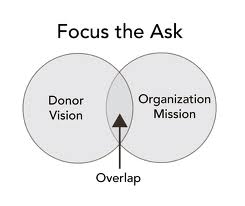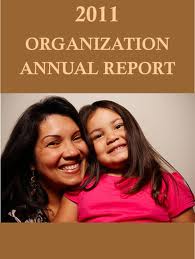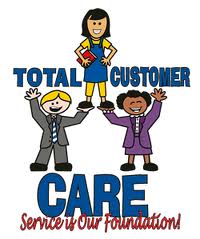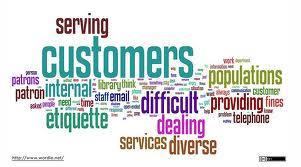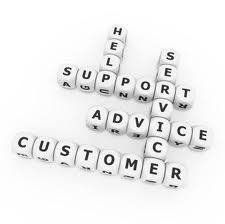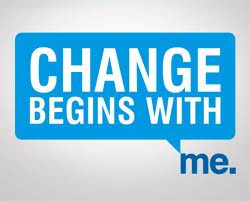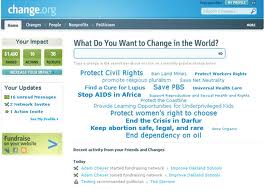 Welcome to O.D. Fridays at DonorDreams blog. Every Friday for the foreseeable future we will be looking more closely at a recent post from John Greco’s blog called “johnponders ~ about life at work, mostly” and applying his organizational development messages to the non-profit community.
Welcome to O.D. Fridays at DonorDreams blog. Every Friday for the foreseeable future we will be looking more closely at a recent post from John Greco’s blog called “johnponders ~ about life at work, mostly” and applying his organizational development messages to the non-profit community.
Today, we’re focusing on a post that John titled: “I Disagree. Now What?“. In that post, he describes “the sound of righteous indignation hitting managerial prerogative,” and the lessons learned about when it is right to disobey and when it is not.
John’s post could send me off in a number of different HR directions this morning, but I am in a resource development mood and want to talk about donors — those investors in your mission.
When I read “I Disagree. Now What?” it got me thinking about all of those times I’ve seen donors throw their dollars around. They want you to develop and launch a new program. They only want their contribution to support certain programs or certain activities.
 Thinking back upon those situations reminds me a lot of the boss character in John’s post. This got me wondering: “Is there ever a situation when a non-profit organization can say ‘NO’ to a donor and use their contribution in a manner that is inconsistent with the donor’s wishes?”
Thinking back upon those situations reminds me a lot of the boss character in John’s post. This got me wondering: “Is there ever a situation when a non-profit organization can say ‘NO’ to a donor and use their contribution in a manner that is inconsistent with the donor’s wishes?”
To be honest, I can’t think of any situations where you can take someone’s money and disregard their expressed intent. However, that doesn’t mean you shouldn’t say ‘NO’ . . . you just need to do it by declining to accept the contribution.
While it is hard to say ‘NO’ to money, especially in today’s philanthropic environment, non-profit organizations need to know when it must happen. If you’re having a hard time thinking of when this might be appropriate, the following are a few examples of when I might do so:
- When Bernie Madoff calls and wants to write me a big check.
- When a company whose brand is inconsistent with your non-profit image wants to contribute (e.g. Hooters, local bar, strip clubs, the tobacco industry, etc)
- When a donor’s wishes are not compatible with your mission.
- When a donor’s wishes are not compatible with your strategic direction.
In my experience, the first two examples are easily identifiable and actionable for most non-profit organizations. It is the last two examples that are very challenging.
 For example, it might make sense for you to accept money to develop a new intergenerational program that brings kids and senior citizens together, but it might not be a strategic priority for your organization. As a matter of fact, it might distract from other more important and pressing strategic initiatives.
For example, it might make sense for you to accept money to develop a new intergenerational program that brings kids and senior citizens together, but it might not be a strategic priority for your organization. As a matter of fact, it might distract from other more important and pressing strategic initiatives.
Declining a donor’s contribution is really hard and should be done rarely, which is why having the right mindset, approach and tools in your fundraising toolbox is important. John does a really nice job addressing this issue in his post:
- When John says, “Pick your battles” . . . I read this as: “Don’t over-solicit. Be very thoughtful about when and what you ask your donors to support.”
- When John says, “Some things I can’t control, but I can influence” . . . I read this as: “Cultivate new prospects and steward existing donors significantly more than you solicit them, and only solicit when it feel right.”
- When John says, “Craft my argument, with data and facts” . . . I read this as: “Develop an amazing case for support and train fundraising volunteers to use it as the foundation of their solicitation.”
- When John says, “Make my case in a compelling fashion” . . . I read this as: “Convince donors to support your mission and the agency’s strategic direction. Demonstrate how doing so aligns with their philanthropic wishes and dreams.”
- When John says, “Take my hits; the pain is temporary” . . . I read this as: “Once in a blue moon, you will have to politely turn down a donation. It will not be the end of the world.”
- When John says, “Seek to understand even while I strive to be understood” . . . I read this as: “The listening-to-speaking ratio involved in donor interactions needs to significantly favor listening. Doing so will improve the odds of understanding, which in and of itself should minimize the number of times you have to say ‘NO’ to a donor because you are able to align the solicitation with their known interests.”
Non-profit organizations should strive to never be in the position of having to say ‘NO’ to a donor, but they need to be prepared to do so.
Have you ever been in a position of having to say ‘NO’ to a donor? If so, how did you go about doing it without damaging the relationship? What mindsets, approaches and tools are in your fundraising toolbox to ensure that you are rarely in this position? Please use the comment box below to share your answers.
If you are responsible for HR at your organization or are currently at odds with your boss, I encourage you to click over to John’s post titled “I Disagree. Now What?” and read it from that perspective, too.
Here’s to your health!
Erik Anderson
Founder & President, The Healthy Non-Profit LLC
www.thehealthynonprofit.com
erik@thehealthynonprofit.com
http://twitter.com/#!/eanderson847
http://www.facebook.com/eanderson847
http://www.linkedin.com/in/erikanderson847






